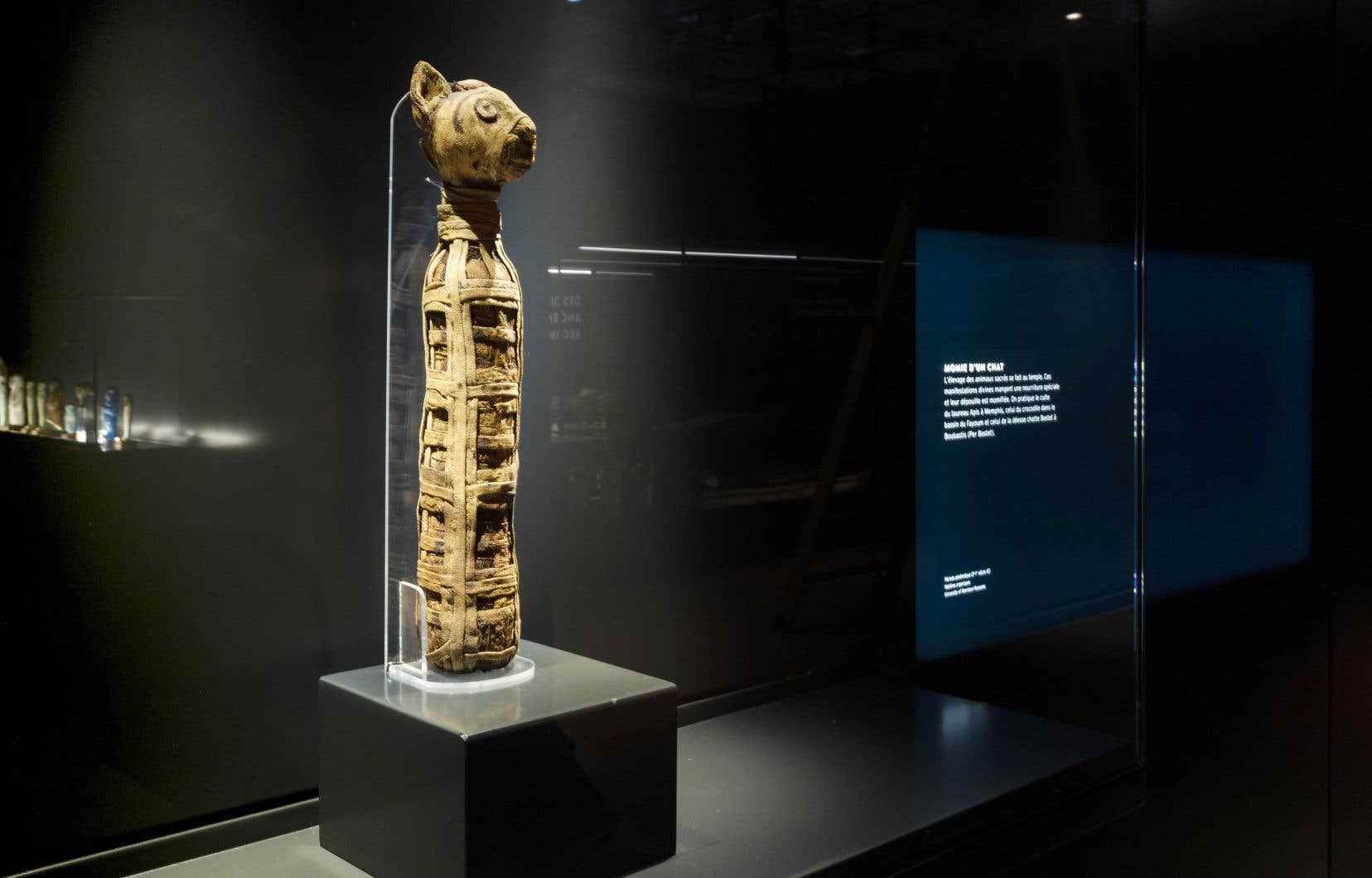The time of the pharaohs isn’t quite like most ancient Egyptian exhibits, which focus on the aura of the pharaohs. This version designed by MuseumsPartner (Austria), in collaboration with the Lokschuppen Exhibition Center, the Roemer and Pelizaeus Museum (Germany) as well as the museum of the University of Aberdeen (United Kingdom), immerses us in the daily life of all subjects of these kings elevated to the status of half-god, half-human. Even more, this exhibition integrates new knowledge resulting from research over the past decades on the hierarchy structuring their society, their means of subsistence, their beliefs, their diet, their clothing customs and their vision of death.
The exciting expedition offered by the exhibition begins with an incursion on the banks of the Nile, the river that has shaped the country and its inhabitants. The Nile was then the main communication route across the country, as evidenced by the model of a boat approximately 4000 years old. Boats of this type were used to transport blocks of stone for the construction of the pyramids, which was not carried out by slaves, but by specialized craftsmen.
Authentic objects
In particular, visitors will have the incredible chance to see various authentic objects used in the daily life of Egyptians and whose state of preservation is breathtaking given the fact that they are several millennia old.
For example, a set of reeds, these pointed reeds used by the scribes to write on the papyrus, and inkwells containing pigments of five colors, which date from 3500 years ago. There is also a doormat made of plant fibers which covered the beaten earth floor of the houses and a broom, a small bundle of reeds used to clean the house. “In the humblest houses, people sat on the floor on this doormat, while in the homes of people of higher social status, stools were available, a specimen of which can be seen in the exhibition”, emphasizes Marie-Christine Bédard, curator of the exhibition.
Also very impressive are these fragments of linen fabrics, these large necklaces made of colored earthenware beads, these various make-up accessories, such as a kohl eyeshadow, a make-up applicator, a stone used to grind minerals blush and tweezers for depilation.
Another unique piece of the exhibition: a fragment of papyrus from the Book of the Dead, which recalls all that the person must have done to deserve to be reborn in the Other World, explains Egyptologist Regine Schulz, professor at Ludwig University Maximilians of Munich and director of the Roemer and Pelizaeus Museum. Even if the pharaohs are therefore not at the heart of this exhibition, a room is devoted to six of those who marked the history of ancient Egypt by their accomplishments. Among them, Cheops, who is known for erecting the Great Pyramid of Giza; Thutmose III, who multiplied the conquests; Ramesses II, who during his 67-year reign signed the oldest known peace treaty in the world; Akhenaten, who attempted to impose a “monotheistic” religion centered on the Sun god Aten; and Hatshepsout, wife of Thutmose, who exercised the regency during the minority of her son-in-law and thereby assumed all the powers of the pharaoh. A few women have indeed held the position of pharaoh, and a visual and sound portrait is offered to us for some of them.
The mythical Tutankhamun does not appear there, because “he assumed the title of pharaoh only from the age of 9 or 10 to 19 years old and is famous in our eyes only because of the discovery of his fabulous tomb exactly one hundred years ago,” says Ms.me Bedard.
One of the centerpieces of the exhibit is, of course, the mummy of Lady Takhar, a wealthy housewife who lived in Thebes around 2,700 years ago, lying next to her decorated coffin and the four canopies that held its viscera (liver, intestines, lungs and stomach).
The use of computed tomography (CT) has made it possible to perform an in-depth examination of this mummy without damaging it, unlike the ways of the past, which consisted of unwrapping the mummy, explained Mr.me Schulz. “This imaging technique even allows us to learn about the diseases from which the mummy suffered and the reasons for death. »
CT was thus used to virtually remove the 50 layers of strips that wrap the mummy without destroying it. An animated hologram therefore shows visitors the stripping of the mummy down to its dried flesh, then its skeleton. A virtual facial reconstruction of this lady carried out by researchers from the Albert-Ludwig University of Friborg is also presented at the bedside of the mummy.
The cat, sacred animal
A spectacular reproduction of the burial chamber of Sennedjem, a state employee who lived during the reign of Ramses II (1279-1213 BC), projects us into the atmosphere we wanted to create for the second life of the deceased.
Among the exceptional elements of the exhibition is also the mummy of a cat, a sacred animal which not only preserved the grain reserves of mice and rats, but was also considered “a divine manifestation” which could not be harmed. or kill on pain of being charged with a major crime. Several Egyptian deities married feline forms for this reason.
A guided tour is offered to visitors, who can thus choose to deepen themes such as slavery, the condition of women and the construction of the pyramids. A workshop aimed at stimulating the observation of artifacts by children will also be offered to families. Large-format projections and interactive screens provide a more concrete understanding of some of the topics covered.
